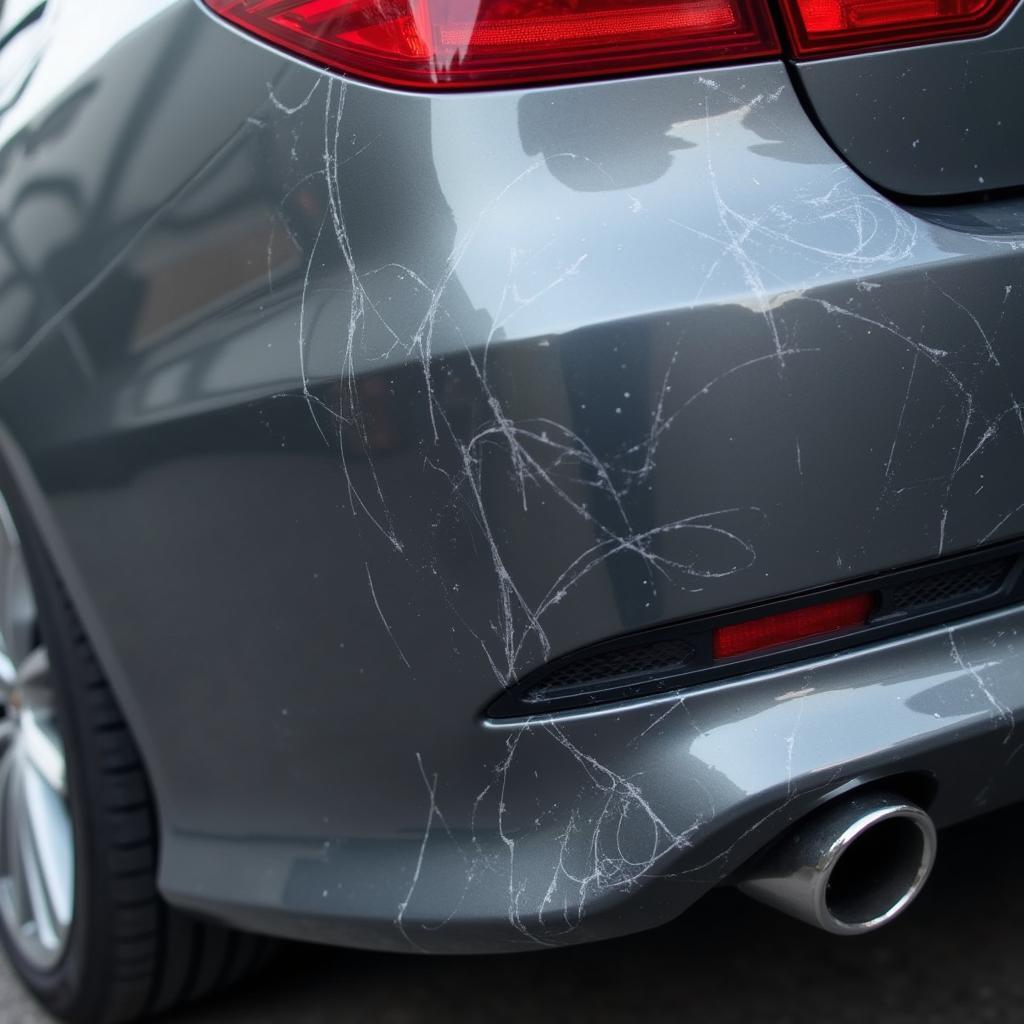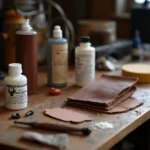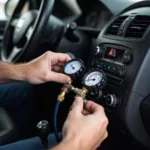Fixing scratches on your car’s plastic bumper might seem daunting, but with the right approach, it can be a straightforward DIY project. Whether you’re dealing with minor scuffs or deeper scratches, this comprehensive guide will equip you with the knowledge and techniques to restore your bumper’s appearance.
Assessing the Damage: Determining the Right Repair Method
Before diving into the repair process, it’s crucial to assess the severity of the scratches on your plastic bumper. This evaluation will help determine the most effective repair method.
- Light Scratches and Scuffs: These are superficial scratches that haven’t penetrated the plastic deeply. They often appear white or lighter than the surrounding paint.
- Deep Scratches: These scratches have penetrated the plastic’s surface and may expose the underlying material. You’ll need more than just a simple buffing to address them.
How to Repair Light Scratches on a Car Plastic Bumper
For light scratches and scuff marks, a few simple steps can restore your bumper’s smooth finish:
- Clean the Area: Thoroughly wash the scratched area with soapy water and rinse it well. This removes dirt and debris that can interfere with the repair process.
- Sanding (if necessary): If the scratches are slightly more than just superficial, use fine-grit sandpaper (around 2000-grit) to lightly sand the scratched area. Use gentle, back-and-forth motions, being careful not to overdo it.
- Apply Rubbing Compound: Apply a small amount of rubbing compound to a clean microfiber cloth. Rub the compound onto the scratched area using circular motions, applying moderate pressure. Continue rubbing until the scratches become less visible.
- Buff the Area: After applying the rubbing compound, use a clean section of the microfiber cloth to buff the area. This will remove any excess compound and restore the shine to your bumper.
How to Repair Deep Scratches on a Car Plastic Bumper
Deep scratches require a more involved approach to effectively repair the damage:
- Clean and Sand: Just as with light scratches, start by cleaning the area thoroughly. Use progressively coarser sandpaper (starting with around 400-grit and working your way up to 800-grit) to smooth out the scratches.
- Apply Plastic Primer (if necessary): If sanding has exposed the bare plastic, apply a thin coat of plastic primer to the area. This will help the paint adhere better. Allow the primer to dry completely before moving on.
- Apply Automotive Paint: If the scratches are deep enough to expose the bumper’s underlying material, you’ll need to apply matching automotive paint. Apply thin, even coats, allowing each coat to dry completely before applying the next.
- Apply Clear Coat: Once the paint has dried, apply a clear coat to protect it and add shine. Follow the manufacturer’s instructions for drying time.
- Wet Sand and Buff (optional): For a professional-looking finish, consider wet sanding the area with ultra-fine-grit sandpaper (around 2000-grit) once the clear coat is completely dry. Follow this up by buffing the area to a high shine.
Car Bumper Repair Kits: Convenient Solutions
If you’re looking for an all-in-one solution, consider using a car bumper repair kits. These kits typically include everything you need to repair both light and deep scratches on your plastic bumper.
Professional Car Bumper Repairs: When to Seek Expert Help
While many scratches can be addressed with DIY methods, some situations warrant professional plastic car bumper scratch repair. If the damage is extensive, involves dents or cracks, or you’re not comfortable with DIY repairs, it’s best to consult a reputable auto body repair shop. They have the expertise and equipment to ensure a seamless repair.
Preventing Future Scratches on Your Car Bumper
Prevention is always better than cure. Here are some tips to help you protect your car’s bumper from future scratches:
- Park Carefully: Choose parking spots away from potential hazards like shopping carts, tight corners, and low-hanging branches.
- Be Mindful of Obstacles: Pay close attention to your surroundings, especially when maneuvering in tight spaces.
- Consider Bumper Protectors: Invest in a bumper protector or guard to provide an extra layer of defense against scratches and scuffs.
Conclusion
Repairing scratches on your car’s plastic bumper doesn’t have to be a stressful ordeal. By following the steps outlined in this guide, you can effectively address those unsightly blemishes and restore your car’s appearance. Remember, if you’re uncertain about any part of the process, don’t hesitate to seek assistance from a professional. With the right approach, you can keep your car looking its best for years to come.



